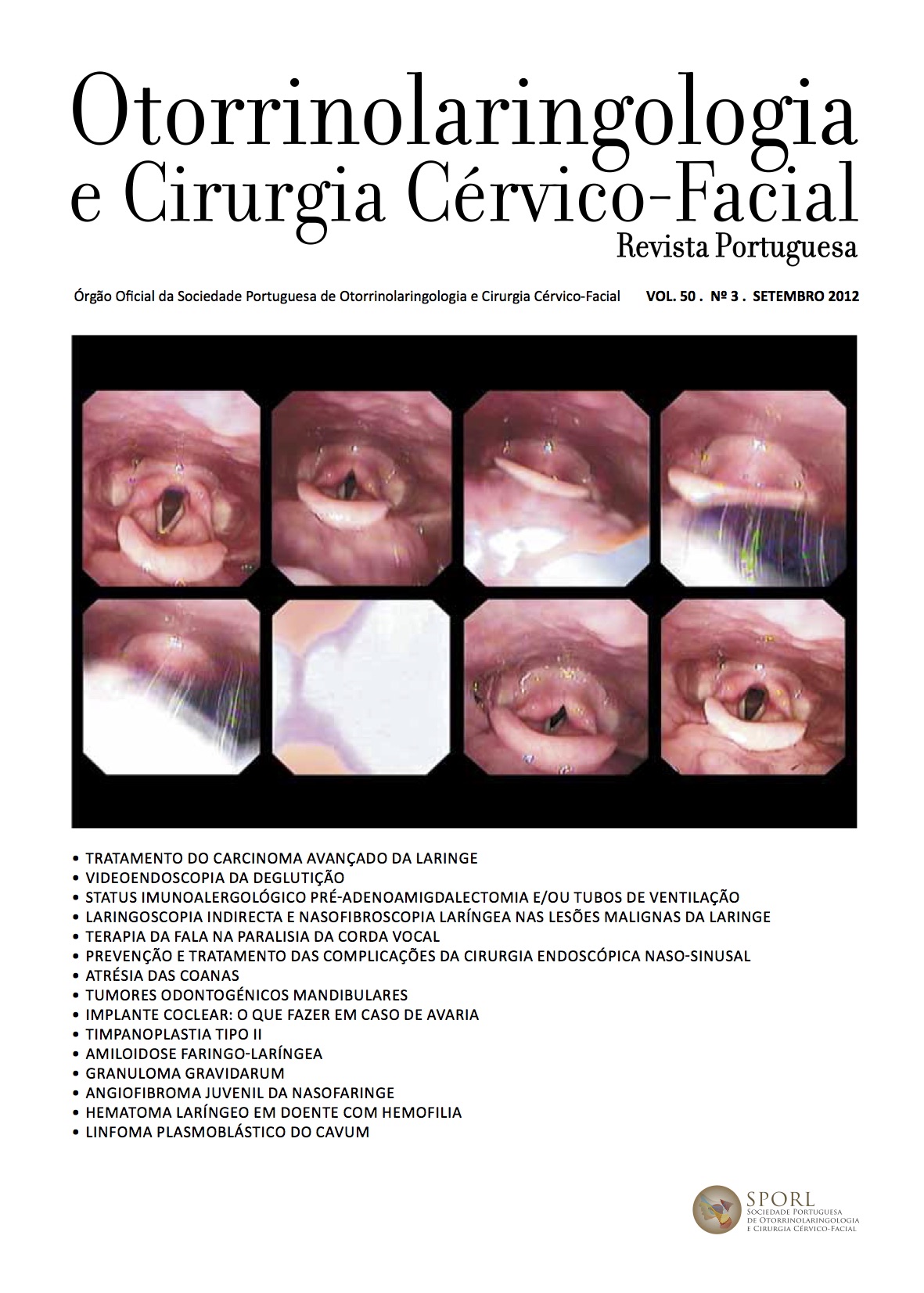Sensibility and specificity of indirect laryngoscopy and laryngeal nasofibroscopy detecting malignant and pre-malignant laryngeal lesions
DOI:
https://doi.org/10.34631/sporl.114Keywords:
Indirect laryngoscopy, laryngeal nasofibroscopy, neoplastic laryngeal pathologyAbstract
Introduction: Indirect laryngoscopy complemented by the laryngeal nasofibroscopy is the most frequent method evaluating neoplastic laryngeal pathology. We intended to determine the sensibility and specificity of these methods and understand their impact in the therapeutic strategy.
Material and Methods: We analysed retrospectively the clinical data of 314 patients performing diagnostic and therapeutic direct laryngoscopy under general anaesthesia between 2005 and 2010 in the ENT department of Hospital de São João. Clinical data from pre-operatory examinations (direct laryngoscopy and laryngeal nasofibroscopy) was compared to the histological study. Sensibility and specificity was calculated.
Conclusions: Indirect laryngoscopy and laryngeal nasofibroscopy are highly sensitive and specific detecting neoplastic and pre-neoplastic laryngeal pathology. The true value of these methods needs to be assessed by prospective studies.
Downloads
References
Arens C, Reussner D, Woenkhaus J, Leunig A, et al Indirect fluorescence laryngoscopy in the diagnosis of precancerous and
cancerous laryngeal lesions. Eur Arch Otorhinolaryngol. 2007 Jun;264(6):621-6.
Kraft M, Betz CS, Leunig A, Arens C. Value of fluorescence endoscopy for the early diagnosis of laryngeal cancer and its precursor lesions. Head Neck. 2010 Nov 29.
Rydell R, Eker C, Andersson-Engels S, Krogdahl A, et al. Fluorescence investigations to classify malignant laryngeal lesions in vivo. Head Neck 2008; 30:419–426.
Zargi M, Fajdiga I, Smid L. Autofluorescence imaging in the diagnosis of laryngeal cancer. Eur Arch Otorhinolaryngol 2000;257:17–23.
Le Corre A, Genevois A, Benichou J, Petit J, Veber B, Dureuil B. [Interpretation of standard chest x-rays in thoracic trauma: influence of the experience of the interpreter]. Ann Fr Anesth Reanim. 1999 May;18(5):503-8.
Jepsen JR, Laursen LH, Hagert CG, Kreiner S, Diagnostic accuracy of the neurological upper limb examination I: inter-rater reproducibility of selected findings and patterns.BMC Neurol. 2006 Feb 16;6:8.






